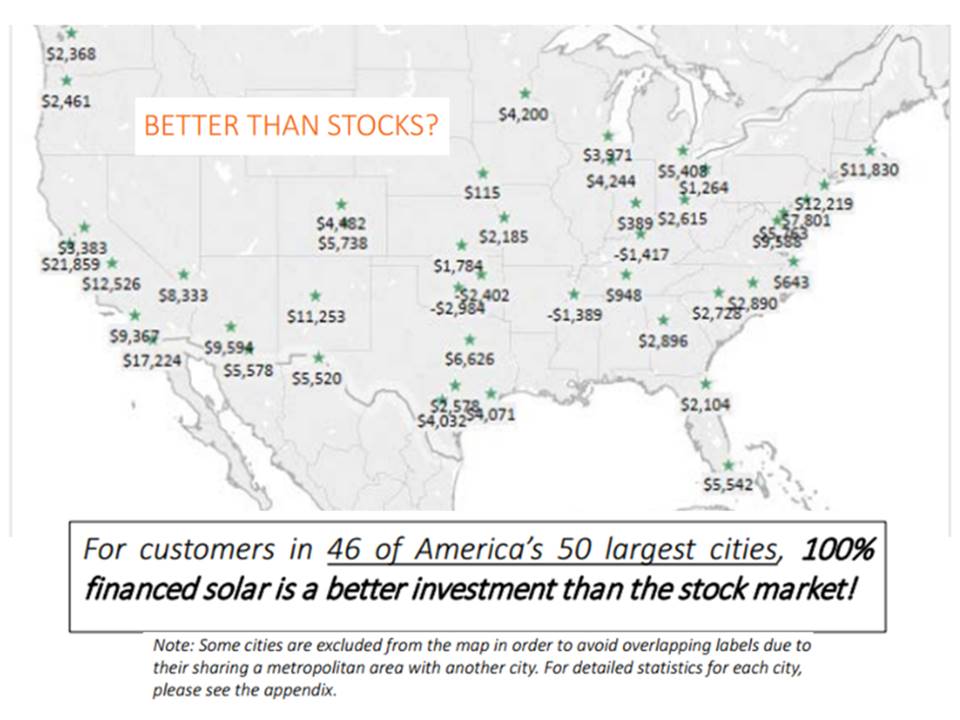This guest blog was originally published by Michael Mariotte, president of the Nuclear Information Resource Service (NIRS) in GreenWorld on January 16, 2015. Find the direct post here. The post references the recent, exciting news about a solar ballot initiative in Florida recently announced by the coalition Floridians for Solar Choice, of which the Southern Alliance for Clean Energy is one of several members.
Just in case there was any doubt, “Americans ‘overwhelmingly’ prefer solar and wind energy to coal, oil, and nuclear energy, according to a Harvard political scientist who has conducted a comprehensive survey of attitudes toward energy and climate for the last 12 years.” So begins a New Year’s Day column in Forbes by Jeff McMahon that a lot of people missed–for most people, New Year’s Day is not prime time for reading about energy issues.

It’s not even close. 80% of the American people want solar and wind to increase a lot, and another 10% want it to increase somewhat (The other 10% probably earn their living either directly or indirectly from the nuclear and fossil fuel industries, or perhaps live in caves and don’t want electricity, or maybe just lie to pollsters).
Said Harvard Professor Stephen Ansolabehere, “In order to get 90 percent, that means a lot of Republicans like solar and wind—more than coal. Everybody likes those sources. This is non-partisan.”
Interestingly, Ansolabehere began his surveys on energy preferences in 2001, when a group of MIT engineers–including a guy named Ernest Moniz, now Secretary of Energy–wanted to see if the public would go along with their idea to address climate change by building 300 new nuclear reactors.
Those MIT folks were probably pretty disappointed. Although as a DOE secretary still pushing nuclear power, Moniz does not seem to have internalized that lesson.
Perhaps Moniz should look a little closer around him. The American people are not just touting solar in public opinion surveys, they’re putting solar on their homes in ever-increasing numbers.
Americans aren’t stupid. Solar power simply makes sense, from any angle you look at it: it makes sense environmentally, it makes sense economically. Not only is solar now cheaper than grid electricity in 42 of the 50 largest U.S. cities, but “the numbers show money spent on a residential solar system earns a better return than investing in Standard and Poor’s 500 index fund.”
Early last year, we and others wrote that a new solar installation, mostly rooftop solar, was going up somewhere in the U.S. every four minutes. President Obama even mentioned that fact in his State of the Union address last year, a claim Politifact rated as “true.”

By late June, we–guessing just a little, since we didn’t have precise data at the time–said “it’s already down to about every 2 ½ minutes.” Now we can take the “about” out of that sentence: there is indeed a new solar installation going up in the U.S. every 2 1/2 minutes. By this time next year, it will be every 90 seconds, and it will continue to drop from there. And when we reach every 15 seconds, or more than a half-million homes per year–which we will, likely by 2018–we will reach the dreaded, or celebrated depending on your viewpoint, “utility death spiral” realm. How utilities choose to react to that–by even more aggressively going after renewables, a la Exelon, or embracing solar entirely, as is NRG Energy, which already is beginning a major expansion of its rooftop solar business–will be fascinating from an intellectual perspective, but more importantly will determine our energy future and whether we will effectively address the climate crisis.
Our bet is on the NRGs of the world. The Exelons and Entergys are clinging to an outmoded business model based on an outdated electricity generation and distribution system that is being overtaken by modern technology and the ingrained American trait of independence and self-sufficiency. If Americans can provide themselves and their families with their own electricity, and the cost is competitive, they’re going to do that. That people now actually save money by installing rooftop solar is just accelerating the trend. That’s how you get the Tea Party forming coalitions with environmental groups in states like Florida and Georgia to encourage solar power. When “Green Tea” coalitions exist and grow in strength–and even Fox News covers it favorably– you know it’s pretty much game over for the utilities that can’t shake themselves free of their 20th century stylings. The last time nuclear power was on a roll was the disco era of polyester and platform shoes. A retro return to that low point in fashion history is far likelier than the nuclear power industry ever returning to relevance.

